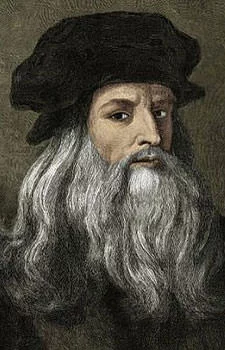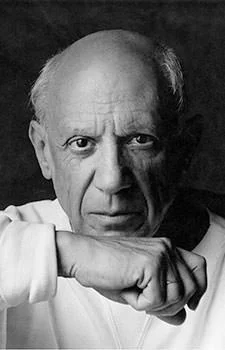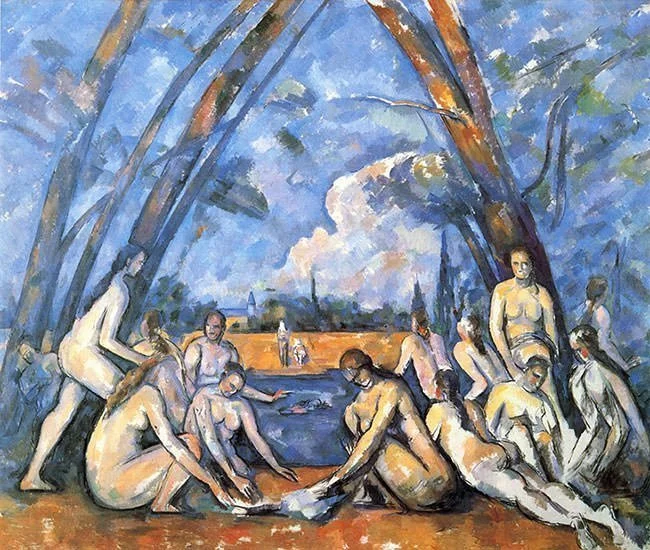Art has seen many great movements including the Italian Renaissance from the 14th to the 17th century, the Dutch Golden Age spanning roughly the 17th century, the French Impressionism of the 19th century and Cubism of the 20th century. Pioneers of these movements have taken the art of painting forward. Know about the 10 greatest artists in history from Leonardo da Vinci of the Renaissance to Cubist Pablo Picasso and have a look at their most famous masterpieces.
#10 Titian

| Lifespan: | 1488/90 – August 27, 1576 |
| Movement: | Renaissance |
| Nationality: | Italian |
Titian’s works define the main features of 16th century Venetian Art. He was a versatile painter, adept with portraits, landscape backgrounds, and mythological and religious subjects. His painting methods, particularly his emphasis on the touches of the brush and even sometimes of fingertips, exercised profound influence on the future generations of Western art. He is also known for transforming the history of art and of patronage, enabling kings and princes of the Church to commission sexual seductions as readily as crucifixions.
Masterpiece: Assumption of the Virgin (1518)

Other Famous Works:-
- Bacchus and Ariadne
- Diana and Actaeon
#9 Michelangelo Buonarroti

| Lifespan: | March 6, 1475 – February 18, 1564 |
| Movement: | Renaissance |
| Nationality: | Italian |
Michelangelo is one of the greatest artists of all time but he defined himself as a ‘sculptor’ and had low view of painting. Still he created two of the most influential works in fresco in the history of Western art: the scenes from Genesis on the ceiling of the Sistine Chapel in the Vatican and The Last Judgement on its altar wall. Hence despite his low opinion of painting, these masterpieces guarantee him a place among the best painters of all time.
Masterpiece: The Creation of Adam (1512)

Other Famous Works:-
- The Crucifixion of St. Peter
- Doni Tondo
#8 Claude Monet

| Lifespan: | November 14, 1840 – December 5, 1926 |
| Movement: | Impressionism |
| Nationality: | French |
Monet experimented with various techniques during his career. His techniques were considered quite “avant-garde” for his time, yet today he is one of the most widely loved and iconic painters. Monet was the founder of French Impressionist painting and the term Impressionism is itself derived from the title of his painting Impression, Sunrise. Many of Monet’s paintings show his fascination for water and light, and the changing conditions of the sky due to time of day, the weather, and the seasons.
Masterpiece: Water Lilies Series

Other Famous Works:-
- Impression, Sunrise
- Haystacks Series
#7 Caravaggio

| Lifespan: | September 29, 1571 – July 18, 1610 |
| Movement: | Baroque |
| Nationality: | Italian |
Caravaggio’s paintings, which combine a realistic observation of the human state, both physical and emotional, with a dramatic use of lighting, had a formative influence on the Baroque school of painting. He is in fact considered the father of Baroque painting. Caravaggio’s style can be seen directly or indirectly in the work of Rubens, Jusepe de Ribera, Bernini, and Rembrandt, and artists in the following generation heavily under his influence were called the “Caravaggisti”.
Masterpiece: The Calling of St Matthew (1600)

Other Famous Works:-
- Death of the Virgin
- Supper at Emmaus
#6 Diego Velazquez

| Lifespan: | June 6, 1599 – August 6, 1660 |
| Movement: | Baroque |
| Nationality: | Spanish |
Velazquez was the leading artist of the Spanish Golden Age. He was an innovator, a “painter of atmospheres” two centuries before the Impressionists, as shown in his colossal ‘royal paintings’ Meninas and The Forge of Vulcan. Las Meninas is a complex and enigmatic work which raises questions about reality and illusion. Due to this it remains one of the most widely analyzed works in Western painting. Famous modern artists, including Pablo Picasso, Salvador Dalí and Francis Bacon, have paid tribute to Velazquez by recreating several of his most famous works.
Masterpiece: Las Meninas (1656)

Other Famous Works:-
- Apollo in the Forge of Vulcan
- The Surrender of Breda
#5 Vincent Van Gogh

| Lifespan: | March 30, 1853 – July 29, 1890 |
| Movement: | Post-Impressionism |
| Nationality: | Dutch |
During his life Van Gogh’s work was known to only a handful of people. He rose to fame in the early 20th century, a decade after his death. Van Gogh’s paintings are noted for their rough beauty, emotional honesty and bold colors. His works are one of the greatest influences in the twentieth century painting, especially in German Expressionism. Together with those of Pablo Picasso, Van Gogh’s works are among the world’s most expensive paintings ever sold, as estimated from auctions and private sales.
Masterpiece: The Starry Night (1889)

Other Famous Works:-
- Sunflowers
- The Night Café
#4 Paul Cézanne

| Lifespan: | January 19, 1839 – October 22, 1906 |
| Movement: | Post-Impressionism |
| Nationality: | Dutch |
Cezanne wanted to represent real life in simple forms. He explored using ‘geometric simplification’ like tree trunk as a cylinder, apple as a sphere etc. Additionally his desire to capture the truth of perception made him explore the optical phenomena to provide the viewer with an aesthetic experience of depth. Cezanne’s exploration of geometric simplification and optical phenomena inspired many painters of the 20th Century to experiment with simplifications and complex multiple views. Pablo Picasso and Henri Matisse are said to have remarked that Cezanne “is the father of us all.”
Masterpiece: The Bathers (1905)
Other Famous Works:-
- Mont Sainte-Victoire
- The Card Players
#3 Leonardo Da Vinci

| Lifespan: | April 15, 1452 – May 2, 1519 |
| Movement: | Renaissance |
| Nationality: | Italian |
Da Vinci was a ‘universal genius’ but for four centuries his fame rested on his laurels as a painter. His detailed knowledge of anatomy, light, botany and geology helped him in creating the masterpieces he is known for. Da Vinci used sudden gradation of tone and is famous for capturing human emotions in expressions and gestures. In the Last Supper da Vinci beautifully captures the expression of each apostle after Jesus said that one of them would betray him; while in Mona Lisa he gives us a smile that is still a subject of conjecture, centuries after the painting was made. Da Vinci was perhaps the greatest in capturing subtle expressions due to which his paintings look more alive than others.
Masterpiece: Mona Lisa (1517)

Other Famous Works:-
- The Last Supper
- The Virgin of the Rocks
#2 Rembrandt Van Rijn

| Lifespan: | July 15, 1606 – October 4, 1669 |
| Movement: | Dutch Golden Age |
| Nationality: | Dutch |
Rembrandt contributions came in the Dutch Golden Age Painting. He is known as the master of light and shadow. His paintings are of exceptional realism always making use of his trademark of light and shadow effects. The most famous paintings by Rembrandt include The Abduction of Europa, which is a shining example of the ‘golden age’ of baroque painting; Hundred Guilder Print, from which his final etching style began to emerge; and his masterpiece The Night Watch.
Masterpiece: The Night watch (1642)

Other Famous Works:-
- The Abduction of Europa
- Hundred Guilder Print
#1 Pablo Picasso

| Lifespan: | October 25, 1881 – April 8, 1973 |
| Movement: | Cubism |
| Nationality: | Spanish |
Picasso was a prolific painter, making around 1900 paintings in his career. He worked in many different styles and usually painted from imagination or memory. Picasso broke the practices of the past and pioneered the art movement Cubism that revolutionized European painting and sculpture. In response to the bombing of Guernica during the Spanish Civil War, Picasso created a painting titled Guernica which showed the tragedies of war and the suffering it inflicted on individuals. Guernica has gained monumental status and has become an antiwar symbol.
Masterpiece: Guernica (1937)

Other Famous Works:-
- Les Demoiselles d’Avignon
- The Weeping Woman



Here we are in the year 2020 and the list is still all men.
Hello, Cool page. I am keen to see a lot more of your work.